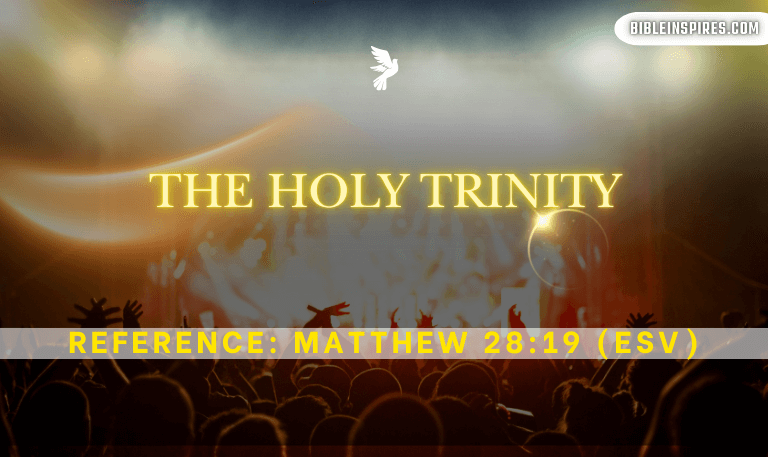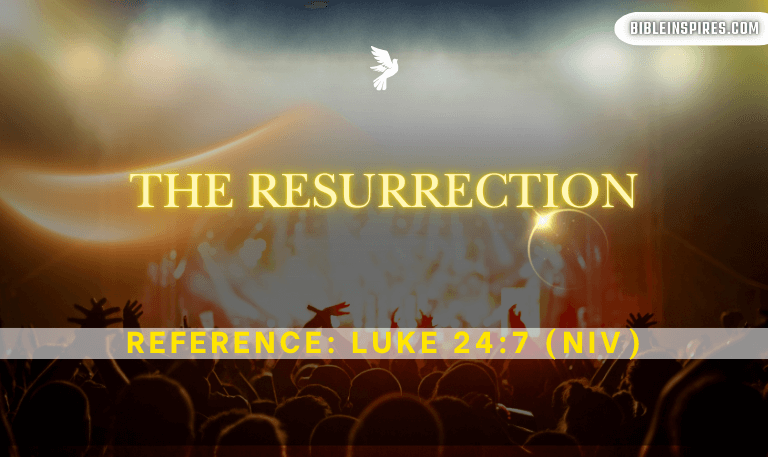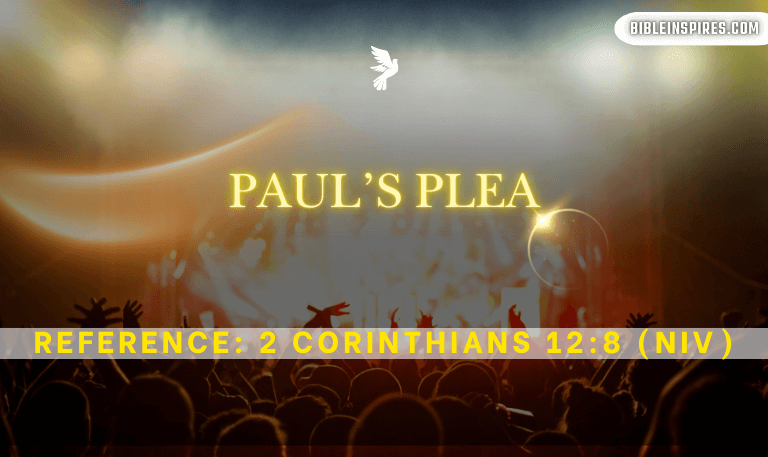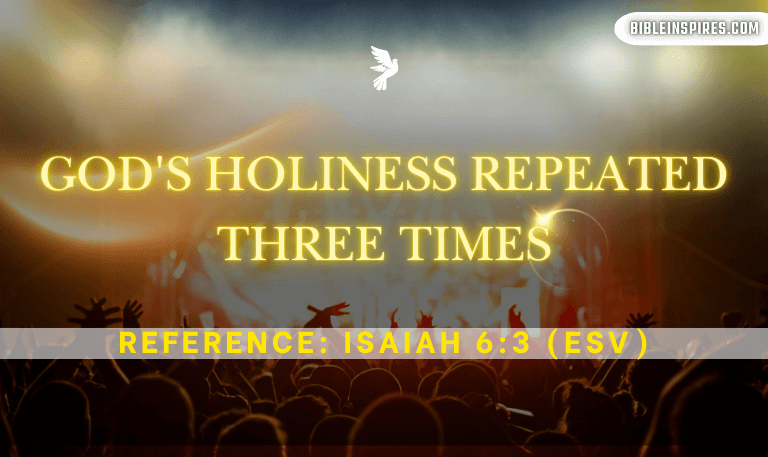Throughout the Bible, numbers serve as more than mere figures; they convey deep spiritual messages and hold symbolic meaning. Among these, the number three stands out as a symbol of divine perfection, completeness, and spiritual renewal. This article explores the Power of Number 3 in Bible Verses, examining its influence on key biblical doctrines such as the Trinity, resurrection, temptation, and redemption.
Whether you’re a theology enthusiast, a student of scripture, or simply curious about biblical numerology, this in-depth exploration will enrich your understanding of how the number 3 shapes biblical narratives and spiritual truth.
The Spiritual and Biblical Significance of Number 3
In biblical numerology, the number 3 often represents:
Divine Completeness and Perfection: The tripartite nature of many biblical themes signifies a whole that is beyond partiality. For instance, many theologians refer to the number 3 as symbolizing complete harmony.
Transformation and Renewal: The pattern of “beginning, middle, and end” encapsulates cycles of death and resurrection—key themes in Christianity.
The Trinity: The embodiment of God as Father, Son, and Holy Spirit is perhaps the most profound representation of the number 3 in the Bible.
By understanding this numerical symbolism, we can better appreciate the layered meaning behind many biblical passages.
Why the Number 3 Is So Significant in Scripture
Several factors contribute to the prominence of the number 3 in the Bible:
Structural Completeness: Many important events or spiritual truths occur in threes. The three stages—initiation, execution, and conclusion—mirror God’s perfect plan.
Repetition for Emphasis: Repeating a word or concept three times often underlines its significance. For example, in Isaiah 6:3, the thrice-repeated “holy” intensifies God’s sanctity.
Divine Order: The pattern of three underscores how God’s plan unfolds—in a measured, complete, and divinely timed sequence.
In the following sections, we’ll delve into seven selected Bible verses that highlight these characteristics.
1. The Holy Trinity: Matthew 28:19

“Go therefore and make disciples of all nations, baptizing them in the name of the Father and of the Son and of the Holy Spirit.” — Matthew 28:19 (ESV)
Analysis
This verse is arguably the clearest biblical declaration of the Holy Trinity: Father, Son, and Holy Spirit. Here, the number 3 is not just a numeral; it’s a framework for understanding the very nature of God. Each person of the Trinity has a unique role:
Father: The Creator and sustainer of life.
Son (Jesus): The redeemer and teacher who brings salvation.
Holy Spirit: The Comforter and guide who empowers believers.
This triple formulation conveys a profound theological truth—that God exists as a unified whole in three distinct persons. The symbolism of 3 here represents divine completeness and unity.
Key Takeaways
Divine Identity: The concept of the Trinity encapsulates unity in diversity.
Baptismal Command: This verse functions as both a command and an invitation, urging believers to share the Gospel in its full, triune revelation of God.
Read Also: Biblical Meaning of 333
2. The Resurrection: Luke 24:7

“That the Son of Man must be delivered into the hands of sinful men, and be crucified, and on the third day rise again.” — Luke 24:7 (NIV)
Analysis
The prophecy of Jesus’ resurrection on the third day is central to Christian belief. This verse encapsulates the cycle of death and rebirth and underscores several key points:
Prophetic Fulfillment: Jesus’ resurrection was foretold by scripture, confirming the divine orchestration of events.
Complete Cycle: The progression from crucifixion (death) to resurrection (renewal) embodies a full cycle—a thematic hallmark of the number 3.
Divine Timing: The “third day” is symbolic of perfection and completeness, aligning with the concept that God’s timing is always perfect.
Key Takeaways
Victory Over Death: The resurrection on the third day assures believers of triumph over sin and mortality.
Hope and Renewal: This pattern symbolizes spiritual rebirth and the promise of eternal life.
3. Three Temptations of Jesus: Matthew 4:1-11
“Then Jesus was led up by the Spirit into the wilderness to be tempted by the devil.” — Matthew 4:1 (ESV)
Analysis
In the wilderness, Jesus faces three distinct temptations from Satan, each aimed at exploiting human weakness:
Turning Stones into Bread: Tempting Jesus to misuse His powers for physical comfort.
Testing God’s Protection: Urging Him to throw Himself off the temple ledge.
Worship for Worldly Gain: Offering control of the kingdoms of the world in exchange for adoration.
Each temptation targets different aspects of human frailty, and Jesus’ victory in resisting these tests demonstrates His sinlessness and commitment to God’s will.
Key Takeaways
Spiritual Resilience: Jesus’ response to each temptation sets a powerful example for overcoming worldly temptations.
Threefold Test: The repetition of three shows the completeness of the test and the thorough nature of Jesus’ victory.
Read Also: Weird Bible Verses
4. Paul’s Plea: 2 Corinthians 12:8

“Three times I pleaded with the Lord to take it away from me.” — 2 Corinthians 12:8 (NIV)
Analysis
In this intimate passage, Paul reveals his deep vulnerability regarding the “thorn in the flesh.” His repetition of his plea three times emphasizes a few critical points:
Persistence in Prayer: Repeating his request thrice underscores the earnestness of his supplication.
Divine Patience: The number 3 reinforces the idea that God’s timing and response operate according to a complete, divine plan.
Strength in Weakness: Even when the plea seems unanswered, God’s grace is shown to be sufficient for Paul’s weakness.
Key Takeaways
God’s Grace: The repetition reflects the idea that divine strength often emerges in our moments of frailty.
Spiritual Lesson: Paul’s persistence invites believers to trust in God’s perfect plan, even when immediate relief is not evident.
5. Peter’s Denial and Redemption: John 21:15-17
After denying Jesus three times before the rooster crowed, Peter is given a chance at redemption in a threefold restoration conversation with Jesus. In John 21, Jesus asks Peter three times, “Do you love me?” and instructs him with the charge, “Feed my sheep.”
Analysis
This passage carries profound implications for understanding grace and forgiveness:
Restoration Through Repetition: Just as Peter denied Jesus three times, He also reinstated him with three affirmations of love.
Divine Grace: The threefold question symbolizes that even after failure, restoration and forgiveness are complete through God’s mercy.
Call to Leadership: Peter’s commissioning to “feed my sheep” signifies his restored role and the responsibility he bears within the early church.
Key Takeaways
Redemption: This threefold conversation reassures us that God’s forgiveness is sufficient to restore even our deepest failures.
Spiritual Accountability: It also reminds believers of their calling to nurture and lead within their communities.
6. Jonah in the Belly of the Fish: Jonah 1:17
“Now the Lord provided a great fish to swallow Jonah, and Jonah was in the belly of the fish three days and three nights.” — Jonah 1:17 (NIV)
Analysis
The story of Jonah is a striking example of how the number 3 signifies a period of transformation:
A Time of Reflection: Jonah’s three days in the belly of the fish mirror the period of waiting and repentance that precedes renewal.
Prefiguration of Resurrection: Many see this as a foreshadowing of Jesus’ resurrection on the third day—a symbol of hope emerging from darkness.
Divine Intervention: The specificity of “three days and three nights” emphasizes that God’s intervention operates in a complete, divinely orchestrated cycle.
Key Takeaways
Transformation: Jonah’s ordeal is a powerful metaphor for personal and spiritual change.
Divine Mercy: Even in moments of disobedience, God’s plan for redemption remains intact.
7. God’s Holiness Repeated Three Times: Isaiah 6:3

“And one called out to another and said, ‘Holy, holy, holy is the Lord Almighty; the whole earth is full of his glory!'” — Isaiah 6:3 (ESV)
Analysis
In this passage, the thrice-repeated “holy” magnifies the transcendent purity and grandeur of God. This use of repetition serves several purposes:
Intensification of Meaning: By repeating “holy” three times, the verse deepens our understanding of God’s infinite sanctity.
Cultural Significance: In the ancient Hebrew tradition, triple repetition of words was a method of emphasizing importance and perfection.
Awe-Inspiring Reverence: This powerful declaration invites worship and reflection on the all-encompassing nature of God’s glory.
Key Takeaways
Ultimate Holiness: The triple reiteration confirms that God’s holiness is not partial but complete.
Worship: It calls all believers to respond in awe and reverence for a truly holy God.
Read Also: Bible Stories About the Ocean
Biblical Numerology: The Deeper Meaning of 3
Beyond individual verses, the number 3 recurs throughout Scripture in various forms. Here are some additional examples of how 3 represents divine order:
Three Patriarchs: The stories of Abraham, Isaac, and Jacob establish the foundational lineage of Israel.
Three Annual Festivals: Passover, Pentecost, and Tabernacles mark key moments in Israel’s history and spiritual life.
Three Prayers: Instances such as Jesus praying three times in Gethsemane further reflect this recurring divine structure.
Read Also: Bible Verses About Long Life
Power of Number 3 in Bible Verses FAQs
Q: What does the number 3 symbolize in the Bible?
A: The number 3 in the Bible symbolizes divine completeness, perfection, and wholeness. It is often used to represent major themes such as the Trinity, transformation through resurrection, and complete cycles of spiritual renewal.
Q: Why is Jesus’ resurrection on the third day significant?
A: Jesus’ resurrection on the third day fulfills prophetic scripture, demonstrating a complete cycle of death, rest, and renewal. This timing underscores the perfection of God’s plan and assures believers of victory over death and sin.
Q: How is the concept of the Trinity related to the number 3?
A: The Trinity—the Father, Son, and Holy Spirit—is the most profound expression of the number 3 in Scripture. It conveys that God is one yet exists in three distinct persons, symbolizing unity in diversity and divine completeness.
Q: Are there other examples of the number 3 in the Bible?
A: Yes, numerous examples exist, such as the three patriarchs (Abraham, Isaac, and Jacob), the three annual festivals celebrated by Israel, and the threefold temptations of Jesus in the wilderness.
Conclusion
The power of the number 3 in biblical scripture extends far beyond mere repetition—it is a reflection of divine perfection, unity, and renewal. From the clear declaration of the Trinity in Matthew 28:19 and the resurrection of Jesus on the third day (Luke 24:7) to the illustrative examples of temptation, denial, and redemption, each verse highlights how integral the number 3 is to God’s plan.

![Top 10 Bible Verses About Brotherhood and Love [Explained] 15 Top-10-Bible-Verses-About-Brotherhood-and-Love-[Explained]](https://bibleinspires.com/wp-content/uploads/2025/04/Top-10-Bible-Verses-About-Brotherhood-and-Love-Explained.png)
![11+ Bible Verses About God and Nature [2025] 16 11+-Bible-Verses-About-God-and-Nature-[2025]](https://bibleinspires.com/wp-content/uploads/2025/04/11-Bible-Verses-About-God-and-Nature-2025.png)
